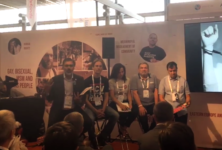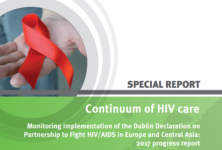No evidence of firstly acquired acute hepatitis C virus infection outbreak among HIV-infected patients from Southern Spain: a multicentric retrospective study from 2000-2014
Abstract
Background
Acute hepatitis C virus (HCV) infection (AHCVI) outbreaks have been described recently within defined areas worldwide among HIV-infected homosexual men. This study aims to describe the cumulative frequency and incidence of firstly acquired AHCVI in an HIV-infected population in Southern Spain.
Methods
This is a retrospective study conducted at the Infectious Diseases Units of eight hospitals in Andalusia, Southern Spain. Primary AHC was considered as HCV immunoglobulin G antibody seroconversion. The time of infection was considered the moment between the last negative and the first positive HCV antibody determination.
Results
A total of 23 cases of primary AHCVI have been detected from 2000 to 2014. Incidence rates [IR; 95 % confidence interval (CI)] were 0.036 (2.272–0.054) per 100 person-years (py) in the overall population over a follow-up period of 64170 py. Of the 22 (95.7 %) male subjects, 21 (95.5 %) had acquired AHCVI by homosexual contact, the IR (95 % CI) was 0.039 (0.024–0.06) per 100 py in this subpopulation. There was no evidence of an increase of AHCVI IR. The incidence of AHCVI was slightly lower between 2000 and 2004 as compared to 2005–2009 [IR ratio (IRR) of 8.8 (95 % CI: 1.279–378.794; p = 0.01)] but reached a plateau afterwards [IRR between 2010 and 2014 versus 2005–2009: 0.727 (0.286–1.848; p = 0.5)]. The median (Q1-Q3) time between the last negative anti-HCV and the first positive anti-HCV determination was 4.7 (1.9–11.2) months. Peak (Q1-Q3) ALT and total bilirubin values during AHCVI were 496 (291–656) IU/mL and 1.15 (0.9–1.98) mg/dL, respectively.
Conclusions
In contrast to what has been reported from other areas, the incidence of primary AHCVI in the HIV-infected population is stable in Southern Spain and there is no evidence of an epidemic, in spite of the high prevalence of HIV/HCV-coinfection in this area.
To read the full study, click here.


 ПОИСК ПО САЙТУ
ПОИСК ПО САЙТУ  поиск по ресурсному центру
поиск по ресурсному центру 


